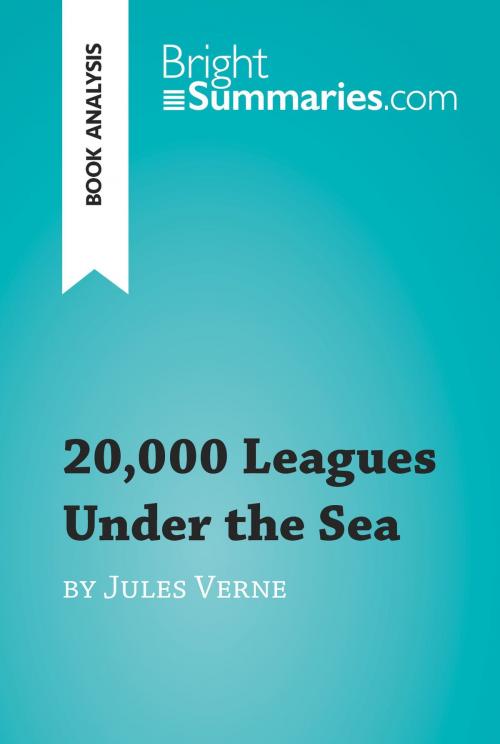20,000 Leagues Under the Sea by Jules Verne (Book Analysis)
Detailed Summary, Analysis and Reading Guide
Nonfiction, Reference & Language, Education & Teaching, Secondary Education, Study Aids| Author: | Bright Summaries | ISBN: | 9782806279842 |
| Publisher: | BrightSummaries.com | Publication: | November 9, 2016 |
| Imprint: | BrightSummaries.com | Language: | English |
| Author: | Bright Summaries |
| ISBN: | 9782806279842 |
| Publisher: | BrightSummaries.com |
| Publication: | November 9, 2016 |
| Imprint: | BrightSummaries.com |
| Language: | English |
Unlock the more straightforward side of 20,000 Leagues Under the Sea with this concise and insightful summary and analysis!
This engaging summary presents an analysis of 20,000 Leagues Under the Sea by Jules Verne, the thrilling tale of three men who are imprisoned on board a submarine and the adventures they face, from fighting giant octopuses to discovering underwater cities. This highly acclaimed novel is regarded as one of the original adventure novels and was considered very ahead of its time, thanks to its in-depth and accurate descriptions of submarines. Jules Verne has been the second most-translated author in the world since 1979 and is often referred to as the “Father of Science Fiction”, proving the significance his work continues to have even to this day.
This engaging summary presents an analysis of 20,000 Leagues Under the Sea by Jules Verne, the thrilling tale of three men who are imprisoned on board a submarine and the adventures they face, from fighting giant octopuses to discovering underwater cities. This highly acclaimed novel is regarded as one of the original adventure novels and was considered very ahead of its time, thanks to its in-depth and accurate descriptions of submarines. Jules Verne has been the second most-translated author in the world since 1979 and is often referred to as the “Father of Science Fiction”, proving the significance his work continues to have even to this day.
Unlock the more straightforward side of 20,000 Leagues Under the Sea with this concise and insightful summary and analysis!
This engaging summary presents an analysis of 20,000 Leagues Under the Sea by Jules Verne, the thrilling tale of three men who are imprisoned on board a submarine and the adventures they face, from fighting giant octopuses to discovering underwater cities. This highly acclaimed novel is regarded as one of the original adventure novels and was considered very ahead of its time, thanks to its in-depth and accurate descriptions of submarines. Jules Verne has been the second most-translated author in the world since 1979 and is often referred to as the “Father of Science Fiction”, proving the significance his work continues to have even to this day.
This engaging summary presents an analysis of 20,000 Leagues Under the Sea by Jules Verne, the thrilling tale of three men who are imprisoned on board a submarine and the adventures they face, from fighting giant octopuses to discovering underwater cities. This highly acclaimed novel is regarded as one of the original adventure novels and was considered very ahead of its time, thanks to its in-depth and accurate descriptions of submarines. Jules Verne has been the second most-translated author in the world since 1979 and is often referred to as the “Father of Science Fiction”, proving the significance his work continues to have even to this day.















